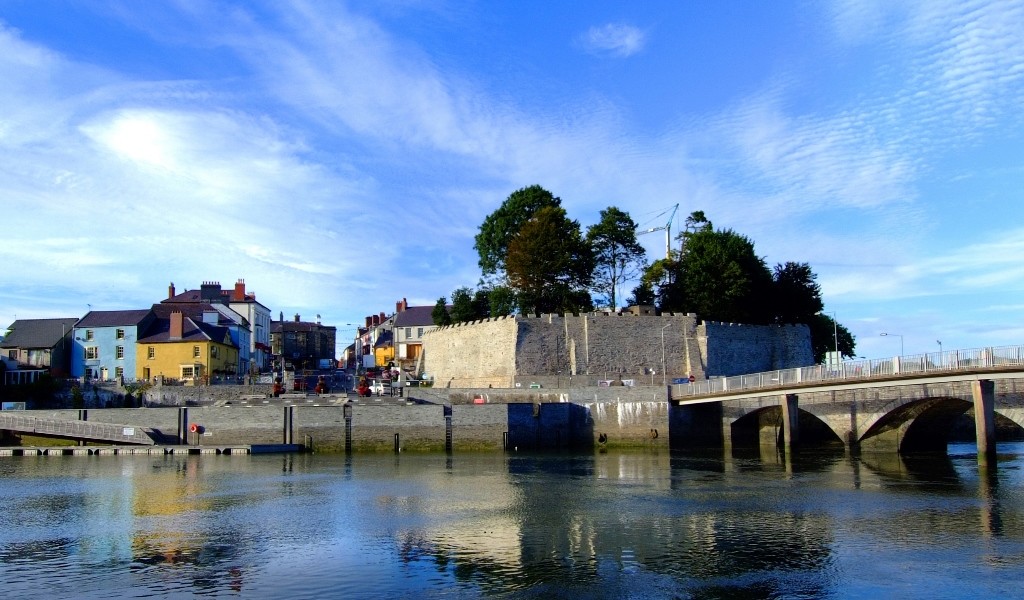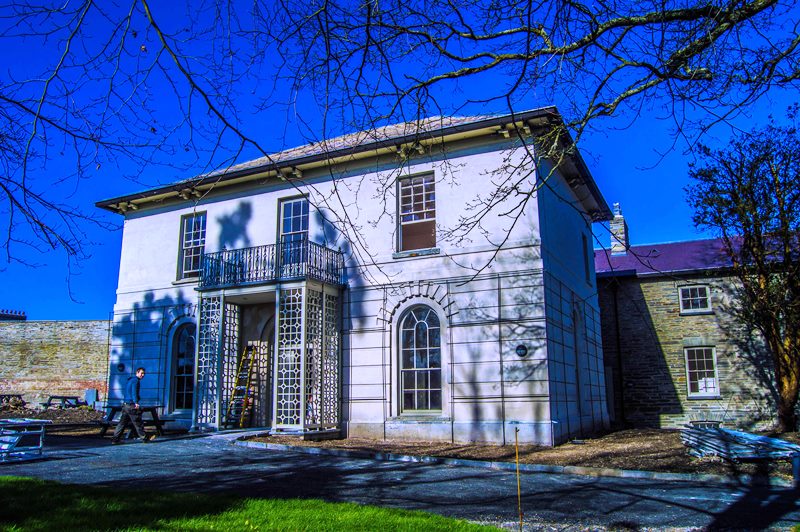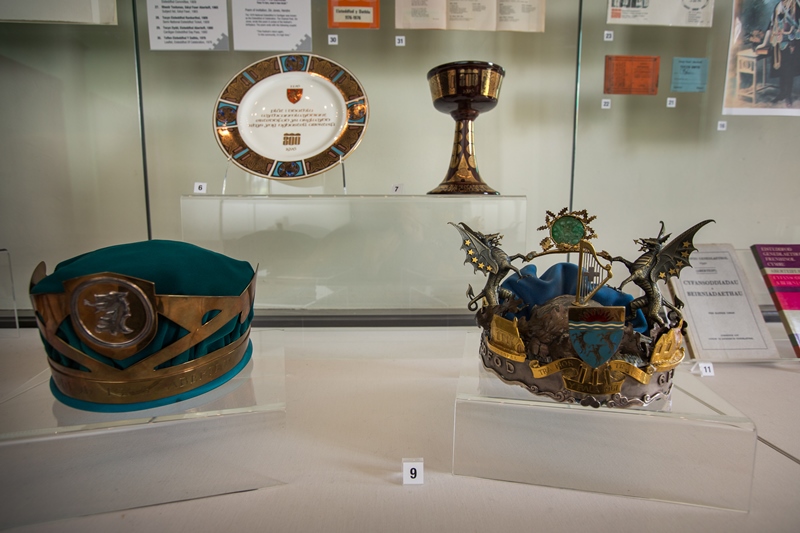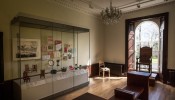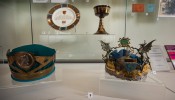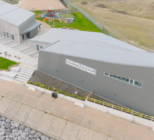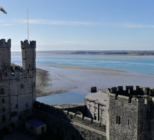Situated on the banks of the River Teifi the medieval Cardigan Castle had become the butt of jokes in the later part of the 20th century as its ramparts were propped up by stanchions and overgrown foliage spilled over its medieval walls. However, a group of hardened volunteers and enthusiasts saw the potential in the dilapidated structure and set up a campaign to save the castle. In 1999 the Cadwgan Building Preservation Trust (CBPT) was established and local newspaper, the Tivy-Side Advertiser – edited at the time by Sue Lewis now the castle’s facilities officer – also championed the cause and ran its own Castle in Crisis campaign in 2001. The result of these efforts led to a 4,000-strong petition in support of saving the castle. “It was propped up by ugly iron girders, the gardens were overgrown and the Georgian house was falling down,” says Lewis. “When we first started people would say ‘why on earth do want to save that’? But we were galvanised because of the fear of it being bought by a private owner and that petition was the bedrock for us. With funders the first thing they ask is ‘have you got community support’?”
Cardigan Castle was built in 1136 and is the birthplace of Wales’ cultural festival the National Eisteddfod, which first took place in 1176. Its last inhabitant, Barbara Wood had lived in the house since 1940 until the late 1990s when she moved to a care home and sold the property. Without the financial means for the upkeep of the castle and its grounds the site fell into a cycle of disrepair.
However, the situation became brighter when Ceredigion County Council bought the castle in 2003 and CBPT put together a number of funding applications. In 2011 it was awarded £12m through a combination providers including the Heritage Lottery Fund, Welsh European Funding Office, Cadw and the Prince’s Regeneration Trust. “I knew from the start it would make an economic difference to the town and 33,000 extra visitors a year, so this is a win win situation for the town,” says Lewis.
The Trust set up a business plan, which would ensure the Castle was run as a sustainable business, and restoration work began in 2012. As part of the redevelopment a number of revenue-generating facilities were incorporated, including community rooms for hire, a restaurant, a shop, self-catering accommodation that sleeps ten, a garden cottage that sleeps two and a B&B for seven above the restaurant.
“These are economic spinning plates that will sustain the heritage of the site and we will also charge visitors a fee for them to enjoy the gardens, which have all been landscaped to their Georgian splendour, and the interpretive exhibitions about the Eisteddfod, Cardigan Town and of course the castle and its last inhabitant,” says Lewis.
One of the initial elements of the restoration was the fixing of the castle walls that had been neglected for hundreds of years. For this specialist stone conservation company Coe Stone Ltd were called upon to conserve the curtain and castle walls as well as the middle turret. Their objective was to consolidate and stabilise the walls, including rebuilding missing sections, and to stabilise the walls so that the steel stanchions could be removed.
“We used a matching lime mortar for repointing,” says director Oliver Coe. “New stone work was stitched in to help maintain the original look of the walls and lime based grout was used to consolidate them, this in conjunction with ‘anchors’ to pin and stabilise. We used Cilgerran stone from a local quarry which was allowed to reopen for the project.” Coe says the project was unusual as virtually nothing had been done previously, therefore complete restoration was required in some parts and the curtain walls needed repointing as a minimum.
As well as the stonework the ground had to be cleared and the garden, which is listed along with the castle, had to be landscaped. The Georgian house was swathed in scaffolding to prevent it from any more damage before being fully restored. It had suffered 60 years of neglect and its ceilings had caved in, floorboards had dry rot and furniture had disappeared through the holes in the floor. “We had a sink hanging in the drawing room from the bathroom above, it was just a complete state,” says Lewis.
Once the walls had been conserved, the house restored and the gardens brought back to their Regency glory, the Trust began to work on the interpretation of the castle taking in almost 900 years of history, starting off with medieval, through to the Civil War, the Georgian history of the house and also the Second World War with a pill box having being situated on the castle walls.
Heritage Interactive were called into work 0n the interpretation and the team’s brief was to deliver three short films which would convey to visitors the unique and special story associated with the site including the castle and Miss Wood. “We were so lucky to find some great partners to work with – local historian Glen Johnson, the National Library of Wales, the National Eisteddfod and even managed to recruit Hollywood actor Matthew Rhys to narrate one of the films,” director said James Brearley.
“A big challenge was how do you condense 900 years of the castle’s history into a 10-minute film that would appeal to as many age groups as possible? We overcame this by ensuring that we kept the film more of a story than as a documentary.”
Heritage Interactive had to ensure that the film it made was simple enough for the visitor to understand. The team faced many obstacles including copyright restrictions on the music they wanted to feature from the festival but they managed to source a Cardigan-based record label, Fflach who allowed them to use their traditional recordings within the film.
“Hopefully visitors will leave with a good idea of what the castle went through in its glorious and at times bloody history – the good and bad times – and how the local community of Cardigan have through sheer persistence and effort, reclaimed the castle as part of their legacy for future generations.”
Johnson, who has been instrumental in researching the history for the interpretation, has been involved with the castle since 1984 when he was completing research for a school history project and befriended Wood. “Even as a teenager you couldn’t help but recognise the significance of this group of buildings,” he says. “Anyone who is interested in the history of Wales, or architecture, castles, historic gardens, Georgian houses, can find it all here.”
The aims of the Trust to preserve the castle and sustain it for future generations has been achieved through a careful balance of commerce and community. It is now able to welcome local visitors, and those from further afield, for the first time so they can learn about its history and the history of the town. And although a year behind schedule, they have hit the ground running and will host a series of concerts and festivals throughout the summer including its official opening concert on 25 July.
The Facts
Funding
Heritage Lottery Fund – £6m
European Regional Development Fund – £4.3m
Local fundraising – £200,000
Suppliers
Andrew Scotts Ltd (contractors)
Baker Mallet (project managers)
Coe Stone Ltd (stonemasonry)
ArbWales ltd (trees)
Barry Evans (Metalwork)
Elmwood Projects (interpretation)
Haley Sharpe Design (interpretation)
Heritage Interactive (interpretation)
BWA Design (graphic artwork)
NPS Property Consultants Ltd (archaeology)
Purcell Miller Tritton (architects)

